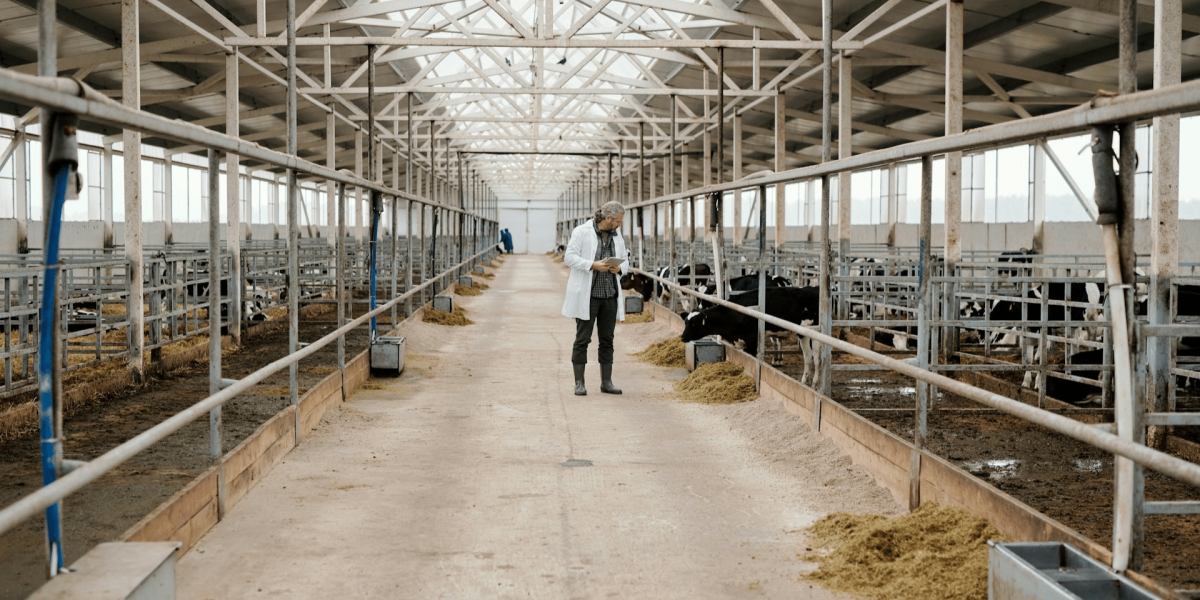The cattle market is influenced by various dynamic factors that affect both the supply and demand for beef. Recently, there has been a slight increase in cattle prices, driven by several market forces such as rising feed costs, export trends, and supply chain adjustments. Below, we explore the key factors contributing to the recent rise in cattle prices and their implications for the market.
Rising Feed Costs
One of the primary drivers behind the increase in cattle prices is the rising cost of feed. Feed is one of the most significant expenses in cattle farming, and any fluctuation in its cost has a direct impact on the price of cattle. Due to challenges like global grain shortages and adverse weather conditions affecting crop yields, the cost of feed has been steadily rising. As a result, cattle farmers are facing higher production costs, which are ultimately passed on to consumers in the form of higher cattle prices.
Feed prices are influenced by factors such as droughts, crop failures, and trade disruptions, all of which can create volatility in the feed market and put upward pressure on the cost of raising cattle.
Demand for Beef Products
The demand for beef products has also contributed to the slight rise in the cattle market. Consumer preferences for beef remain strong in many regions, particularly in North America and parts of Asia, where beef is a staple in diets. As consumer demand for high-quality beef products increases, the price of cattle is affected by the need to meet these demands.
Moreover, rising disposable incomes in emerging markets are contributing to increased consumption of beef, further driving up demand and supporting higher cattle prices.
Export Market Trends
Export market trends play a key role in shaping cattle prices, as global trade influences the supply and demand balance. Countries such as the United States, Brazil, and Australia are major exporters of beef, and any changes in trade policies, tariffs, or international demand can significantly impact the cattle market.
Recently, growing demand from Asian markets, particularly China, has led to increased exports of beef. This higher demand from international markets contributes to the upward trend in cattle prices, as exporters capitalize on favorable trade conditions and rising global demand.
Impact of Weather Conditions
Weather conditions are an important factor in determining cattle prices, as they affect both feed availability and livestock health. Severe weather events such as droughts, floods, and extreme temperatures can reduce the availability of grazing land and water resources, leading to lower cattle production levels.
In regions that are heavily affected by droughts, cattle farmers may be forced to reduce their herds, leading to lower supply in the market and contributing to higher cattle prices. Conversely, favorable weather conditions that improve pasture quality can lead to increased supply and more stable prices.
Supply Chain Adjustments
The global supply chain disruptions caused by the COVID-19 pandemic have had lingering effects on the cattle market. Supply chain adjustments—including processing plant shutdowns, labor shortages, and transportation delays—have all contributed to fluctuations in cattle prices. As supply chains adjust to post-pandemic conditions, cattle markets are experiencing some volatility, with prices rising due to reduced processing capacity and logistical challenges.
The gradual recovery of supply chains is expected to stabilize the market, but short-term disruptions may continue to cause price increases.
Cattle Prices by Region
Cattle prices can vary significantly by region due to differences in climate, feed availability, and market demand. In regions with favorable grazing conditions and lower production costs, cattle prices may remain relatively stable. However, in areas where feed costs are high and climate conditions are unfavorable, prices tend to be more volatile.
For example, in drought-affected areas of the United States, cattle prices have seen sharper increases compared to regions with more favorable weather conditions.
Government Policies and Subsidies
Government policies and subsidies play a key role in influencing the cattle market. In many countries, governments provide subsidies to support farmers and stabilize the market in times of economic or environmental hardship. Policies that promote sustainable farming practices or incentivize the production of high-quality beef can also impact cattle prices.
Moreover, trade policies such as tariffs, import quotas, and export restrictions can influence the global supply and demand for cattle, leading to price fluctuations.
Consumer Price Sensitivity
While demand for beef remains strong, consumer price sensitivity can influence cattle prices. As beef prices rise, consumers may begin to shift their preferences toward alternative protein sources such as chicken or plant-based meats. This shift in consumer behavior could lead to a softening of demand for beef, potentially moderating future price increases in the cattle market.
However, in markets where beef is a cultural staple, consumers may be more willing to absorb higher prices, supporting sustained demand even in the face of rising costs.
The slight increase in cattle prices is the result of a combination of factors, including rising feed costs, strong demand for beef, global export trends, and weather-related challenges. As these variables continue to evolve, the cattle market is likely to remain dynamic, with potential price fluctuations in the short term. Farmers, exporters, and consumers alike must navigate these changes to ensure a stable and prosperous cattle industry in the future.







